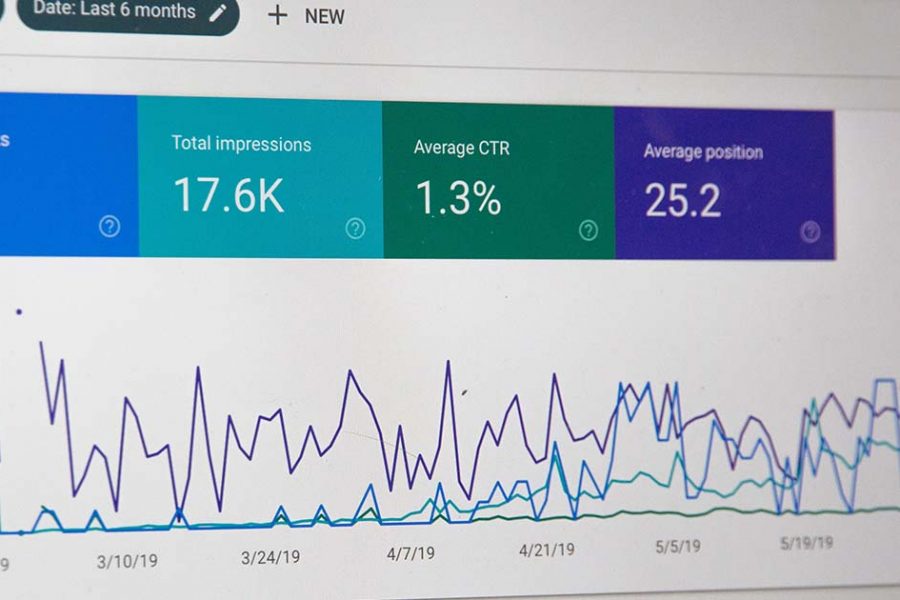At RecWebs we live and breathe recruitment websites. Designing and building quality websites specifically for recruitment companies, we know our way around a recruitment website but there are so many technical aspects that for those not in the industry the terminology can seem baffling.
Every one of the terms in this A-Z relates to a crucial aspect of the website design and build process or is an integral feature on a recruitment website. We hope this mini encyclopaedia of recruitment website terms helps you to understand and decipher the key elements that make up a good recruitment website and its journey to launch.
A – Applications
One of the main objectives for any recruitment website is to increase the number of quality applications. Once a candidate lands on your website your goal is to encourage them to apply for one of your jobs. There are several ways your website can help to do this, starting with trust building. Display testimonials from previous candidates detailing the smooth process they experienced and their successful placement into a great job. Publish articles on your blog page that illustrate your expertise in the area in which you recruit. This establishes trust in your business and reassures candidates during what can be a stressful time. Candidate journeys must also be smooth, ultimately leading the candidate towards your jobs page. Everything from fast page load times, to advanced search features, to an easy to understand application process must be checked to ensure the candidate doesn’t get frustrated and leave your website before they apply for a job.
B – Blog
A regularly updated blog page is a great way to demonstrate your agency’s industry knowledge, strengthen brand identity, share important news and boost traffic to your recruitment website. Blog articles could be company or industry news, career or recruitment advice, or thought pieces on topics that affect your industry. A blog page that contains regularly published, well-written articles will help to establish your agency as experts in your field and boost your website’s SEO. There are several ways you can increase your blog’s ROI, from ensuring the content is relevant and targeted, to sharing and promoting them on your website and through your social media channels.
C – CV
Encouraging candidates to upload their CVs should be one of the key aims of a good recruitment website. By incorporating a candidate account feature as part of your candidate management system, candidates can easily register their CVs. Submitted CVs can then be edited or removed by the candidate from the candidate dashboard when they’re logged in. Not only does this make it simpler and quicker for candidates to apply for jobs, it allows recruiters to build an internal talent pool and curate a searchable CV database. Quality CVs are like gold dust to recruiters and being in possession of a range of CVs relevant to the industry you recruit in will help you to quickly find talent when the right opportunity arises. For these reasons it’s a good idea to prompt candidates to submit their CV even if you don’t currently have a suitable job.
D – Design
Website design incorporates both the aesthetics of a website and its navigation and functionality. Indeed, aesthetic and functional design are intertwined as, if an element looks great but impedes the user experience, it shouldn’t be integrated. Similarly, all functional and navigational elements should be well designed in a style that is in keeping with the overall website. A great design will therefore look great and function perfectly. Web design impacts how users perceive your brand and will play a big role in whether they stay on the page and continue to journey through your website or if they click away onto a competitor’s website. Good web design will heighten the user experience.
E – Experience
User experience (UX) is all-important. This is the experience visitors have when using your website, from how quickly the page loads, to how easy it is to find what they’re looking for, and much more. It covers the entire experience a user has with your website, from the moment they click onto it to the moment they leave it. The foundations for good UX are ease of use, good speed and intuitive navigation. Essentially, good UX will fulfil your user’s needs. The experience a user has is directly related to the success or otherwise of the user journey.
F – Footer
A website footer is a section at the bottom of a web page that contains further links to essential pages as well as branding elements. Consider it a safety net for those who haven’t found what they’re looking for further up the page. For this reason, it’s important to think about what your visitors will be looking for. It’s also a great space for those ‘boring but important’ pages such as your Privacy Policy that you might not want to take up valuable header room with. Typical links are to your Privacy Policy, Terms & Conditions and any other policy notices you may have, plus a navigation list containing key pages. Contact details, social media buttons and your logo will also likely appear in your footer.
G – GDPR
Designed to protect personal data, GDPR is mandatory for all organisations that process the personal data of EU residents across the globe. Recruitment websites need to therefore gain a candidate’s consent before collecting and storing their data. This obviously affects CV uploads and candidate registrations. Candidate accounts hold a substantial amount of personal data and so it is vital that you show transparency and accountability with regards to the protection of that data. A privacy notice on your website specifying how you use personal data is imperative. If you need further details, take a look at our really helpful GDPR guide.
H – Hero
A hero is a large banner image at the top of a website page, typically covering its full width. Its prominence means it is often the first element a visitor sees and therefore sets the tone for the website. A good hero positively influences opinion, establishes trust, boosts branding and engages visitors. It can be static or dynamic (in the form of an animation or a video) but it must be of a high resolution and optimised so that page load time isn’t affected. When choosing the image or multimedia for your hero always ask the question, “does it add value?”. If it evokes the right emotion, creates a positive feeling and generates actions that align with your navigational plan, you’re on the right track.
I – Industries
The industry you recruit in will, to some extent, have a bearing on what you include on your website and the direction you want to take it. For example, if you recruit in the Education sector you will likely need a page on safeguarding. If you recruit for Financial Services clients you might take a more corporate approach to the design and tone of your website. However, other elements will be an entirely personal decision related to your agency rather your industry. Much will be focused on branding and the way you want to position yourself in the market rather than being determined by the industry you recruit it.
J – Jobs
Most recruitment websites will incorporate a jobs page as it gives recruiters their own platform on which to advertise their jobs. A great jobs page will incorporate advanced job listing features to make it easy for candidates to find the results they’re looking for and for search engines, including Google for Jobs, to find your jobs. Optimised job listings, advanced search and filtering, a job map, and the ability for candidates to create job alerts all contribute to a jobs page that is both user and SEO friendly.
K – Keywords
Keywords are the words and phrases that internet users enter into a search engine in an attempt to find what they’re looking for. As a website owner you want to incorporate the keywords that users will be searching for so that your website pages feature highly in the engine’s results list. First of all you need to work out which words your target demographic are searching for. Whilst there is some element of common sense to this, it is also advisable to do keyword research by using a research tool and by entering keywords into a search engine yourself. Utilise these keywords in both the titles and the main body of your copy but don’t overstuff them as search engine bots will penalise you for it. Keywords should also be used in the meta descriptions and alt attributes for each page.
L – Location
What geographical areas do you serve? Are you a national or international recruitment agency or do you recruit within a specific location, whether a region of collection of counties? This is important when it comes to SEO on your website. Most people still search for jobs within or near their local area so optimising your website and your jobs for local candidates is vital. Add the schema markup for a local business to your website so that search engines can read your address and set up a Google My Business listing so that you can appear in the maps listings on Google. Including your location, or the location you want to target, in your meta titles and descriptions will help your pages to appear in the results pages on search engines when relevant keywords are searched for. For example, if you recruit for legal jobs in the North East, you want to be on the first page of results when someone who is looking for a legal job in the North East searches for those terms.
M – Menu
Website navigation is hugely important, affecting UX and bounce rates. Ultimately, if a visitor can’t find what they’re looking for or finds the layout of your website confusing they’re going to click away, possibly onto a competitor’s site. One element that plays a vitally important role in the success or otherwise of your website’s navigation is the menu. A website menu is a list of named links to the key pages on your website to help users navigate from one page to another and quickly find what they want. There are several different types of menu and varying placements for them. You will often find them at the top (header), the bottom (footer), or at the side (sidebar). For mobile devices, when screen space is limited, a hamburger menu is popular as it hides the menu, only opening it up when tapped.
N – Newsletter
An e-newsletter is a great way both to repurpose content on your recruitment website and link back to your blog and other pages. A great email newsletter can increase your database, engage candidates and clients, build your brand and instil trust and loyalty in your readers. Define your audience to keep it targeted, make it snappy, catchy and visually appealing so that it’s un-deletable, choose relevant content and settle on a call of action, whether that’s for previous clients to contact you, candidates to update their CVs, and so on (whatever it is, make it clear and link it to the correct page on your website so that they can easily perform that action.).
O – Objective
When embarking on a new website or re-designing your existing website, there are a number of questions you must first ask yourself and top of that list should be, “what is the objective of my website?” What do you want your website to achieve, what results do you want it to produce? These will align with your overall business goals – your website is an integral part of your business strategy and your recruitment marketing plan so it should serve to help you to reach those goals. Do you want to bring more clients on board, drive more candidates to your website, generate more applications? If you have an existing website do you have a high bounce rate and therefore want to increase visitor engagement? Perhaps you want to display your expertise, instilling trust and loyalty in your audience by publishing thought pieces and industry news. A website is an investment and for it to yield a strong ROI it needs to be underpinned by a strategy that’s directly tied to your business goals and objectives.
P – Process
When potential clients and candidates visit your recruitment website, they will want to know your processes. Each is looking to invest in a recruitment business, whether that’s their future career or a future team member. They need to be able to trust the recruiter they sign up with. How do you take clients from talent request to placement and candidates from application to hire? Be transparent and detail the process from start to finish on the relevant client or candidate page. Make it visually clear and informative, perhaps with a carousel of steps, flippable tiles, different icons or a simple drop-down or expandable list. In addition to ensuring clients and candidates know exactly what to expect if they work with you, explaining your processes and breaking them down into steps will help to build trust and confidence in you, your team and your business. It illustrates your attention to detail and compliance, as well as allowing them to visualise the path to success that you will take them on.
Q – Questions
Adding a Frequently Asked Questions (FAQ) section to your recruitment website can help to immediately field and solve commonly asked questions about the recruitment process for both candidates and clients, though the majority will probably be directed towards candidates. FAQs can be related to applications (“how do I apply?”), the registration process (“why can’t I sign in?”, “what documentation do I need to submit?”, “will I have a face-to-face/video meeting?”), interviews (“will you provide interview advice or coaching?”) and general questions about communication, services, and so on. By providing a comprehensive list of FAQs you will help visitors find what they’re looking for, save time by answering a question that otherwise would need an email or a phone call, and improve your website’s SEO by including answers to questions candidates may be inputting into search engines.
R – Registration
Creating a candidate account on your recruitment website requires a well-designed registration process. It should be easy to understand and action, including a simple CV upload, or candidates will give up during the process and you’ll have lost the chance to capture valuable data, potentially even putting the candidate off from applying for any of your jobs. Encouraging candidates to register for an account on your website can enhance the candidate experience by making it easier to apply for future jobs, plus offering the option of job alerts. It also allows you to build an internal talent pool that can be targeted when the right opportunities arise. Not all recruiters opt to incorporate candidate accounts on their websites but it can be beneficial for both recruiter and candidate. A popular decision is to make registering for an account optional. If you do decide to build-in a candidate account, make sure your privacy policy, setting out how you handle their data and what their rights are, can be clearly accessed on your website.
S – Salary
Whether to include salary or at least a salary range on the job postings on your recruitment website is a fiercely debated topic but it is one of the first things candidates look for when reading job adverts. For a start, being transparent about salary shows that you and your client have nothing to hide and that you are both committed to open and honest dialogue and dealings with your candidates and the client’s potential employees. Disclosing salary is a significant trust builder. People are becoming less secretive about money and discussions about salary are being more normal, especially amongst Millennials and Gen Z. Remuneration is also an incredibly important consideration when searching for a job. After all, you don’t often leave a job to be paid the same amount or less. Candidates want to climb the ladder and that includes higher pay as well as a higher level. Ultimately, the inclusion of a salary within a job advert can increase not only the application rate but help to ensure those applications are from serious candidates who understand what they would be paid and are happy enough to proceed.
T – Testimonials
Statements from happy clients describing their positive experiences of the service they received or continue to receive are extremely powerful. By including testimonials on your website, you are effectively helping potential clients and candidates make a decision and feel confident about that choice, knowing that others have done just that and benefited from it. That is social proofing – establishing trust and confidence in visitors to your website via third party influence. We’re all influenced by others, it’s human nature, and it makes sense to harness that in business. A stand-alone page for testimonials allows website visitors to immediately check out your credentials and can be used as a CTA on other pages. Testimonials can also be peppered throughout the other pages on your website as supporting copy – in this instance include them at the bottom of a page, next to pricing or by a claim in your copy.
U – User journey
A user journey is the route on which you send visitors through your website to facilitate a set transaction or other goal. User journeys can be different for different types of user. For example, the user journey you send candidates on will be different to the one you direct clients on as you will want them to read different information and perform different actions. The user journey must be clear from the very first interaction so planning is key. User journeys must be discussed and strategised at the very early planning stages of your website so that they can be integrated into its structure via the sitemap and wireframe.
V – Video
Video is widely used in website design – it is an easy way to consume content and is an increasingly familiar way to do so. It is an extremely powerful tool of visual communication and has become a huge trend in content marketing. From brand videos, to how-to videos, to hero videos and many more in between there are a range of possible ways to utilise video on your website. Whether it works for your recruitment website will depend on your user demographic, the quality of video you can produce, time constraints and how video will work with other elements of your web content. Video can result in increased engagement and approachability but be aware of accessibility issues and the fact that not everyone is a fan of video.
W – Whitespace
Incorporating whitespace into your website design is vital for better readability and usability. Incorporating purposeful and thoughtful swathes of whitespace allows you to focus visitors’ eyes on important messaging and can act as a navigation tool, leading them to the pages you want them to journey to. It also gives the eyes a break, especially on pages with a large amount of copy, multimedia or bright images. Whitespace can also be useful for mobile users, especially around buttons, to ensure they are easily tappable. Whitespace can keep people reading and engaged, focuses attention, and has the added bonus of increasing page load speed. Consider whitespace the design element that allows key features to shine. It provides balance, calm and clarity.
X – XML feed
XML, or eXtensible Markup Language, describes and structures data on the internet. It annotates text and other data but is invisible to website users. Instead, the user’s browser reads, processes and presents the text as instructed by the commands, or tags, made by XML and that is what we see on our screens when looking on search engines and websites. XML allows for the addition of new tags and building blocks, making it adaptable to each website builder’s needs (hence why it is ‘extensible’, ie it is designed to allow the addition of new capabilities and functionality). An XML feed is a form of paid advertising which allows a search engine to gather specific information from your website without having to crawl through its pages.
Y – Yoast
Yoast SEO is one of the most widely used WordPress plugins around, largely because it is a powerful yet extremely easy to use and intuitive tool. It is also included on all RecWebs websites to aid your recruitment SEO. Essentially, Yoast can help you to ensure your website is as search engine friendly as possible. But what is SEO? Standing for Search Engine Optimisation, SEO is the process of helping your website to rank higher in search engines organically, i.e. not through paid advertising. This in turn will help you to attract more talent and more clients by leading them to your website when they search for relevant recruitment agencies/jobs/blog topics.
There are a number of ways you can optimise your website for search engines, including doing keyword research and optimising your copy accordingly, regularly updating your website with fresh, quality and relevant content and ensuring your site is mobile friendly. You also need to ensure title tags, meta descriptions and alt text are optimised. Yoast enables you to easily manage meta descriptions, set targeted keywords, track your usage of them, and much more. Plus it will give you recommendations if improvements could be made to a page’s SEO.
Z – Z pattern
We all read from top to bottom and most cultures read from left to right. When we start to look at a website page we tend to scan first to check whether it is of interest or is relevant and we do this predominantly in one of two patterns. Z-patterned scanning tends to occur on pages with scant text, where images dominate, particularly on the homepage. The eye is drawn to the top left and scans right, partly due to normal reading mode and partly because that space is generally home to a menu bar. The eye then scans diagonally down to take in the image and across the bottom of the page where there is often content. Again, this can guide the placement of important information.
This can be achieved in a number of ways but, for example, you might want to place your logo at the top left, a call to action button top right, images or a slider in the centre to keep the eyes following the Z pattern, important information along the bottom and another call to action bottom right. This highlights the importance of visual hierarchy in website design when it comes to bounce rate. Get it right and visitors are more likely to stay on your website, taking the route you want them to.





